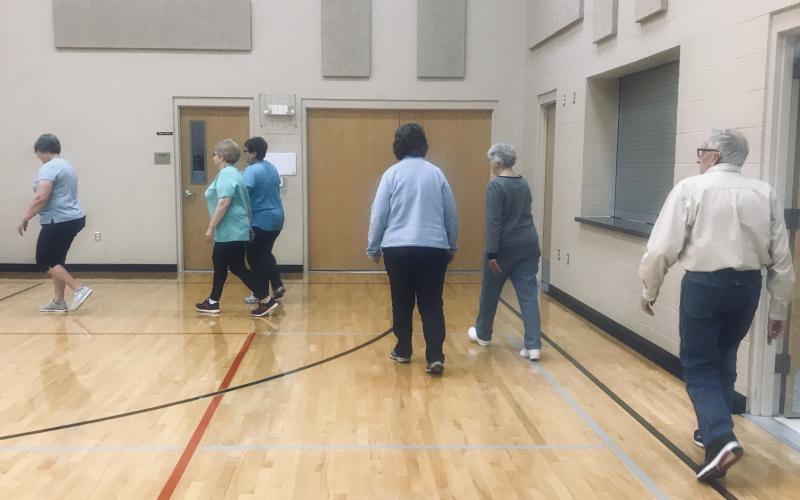Originally written by Hope Kleine, former SDSU Extension Health Education Field Specialist. Updated by Emily Kranz, former SDSU Extension Health and Physical Activity Field Specialist.
As one ages, they may experience physiological and functional declines that are associated with the loss of muscle mass (sarcopenia) and muscle function, which can cause a decrease in strength and vigor. Activities of daily living may become more challenging as this loss progresses. Along with the increased risk of developing sarcopenia, aging also leads to balance issues and increased fall risk. Research has shown that there are preventative measures one can take to reduce unintentional muscle loss and decrease pain or symptoms that may be a result of aging.
Health Benefits

Strength training or weightlifting has been proven helpful for the prevention of muscle mass loss and function. Strength training is an activity that works to keep muscles strong, can build new muscle, and is safe for both men and women of all ages. Adding muscle-building activities to your routine 2 to 3 days per week will build muscle strength, muscle mass, preserve bone density, and help maintain independence. It will also reduce the risk of osteoporosis and signs of other chronic diseases, improve sleep quality, and reduce depression.
According to the Centers for Disease Control, strength training has the following effects on certain chronic diseases:
- Arthritis: Reduction in pain and stiffness; increased strength and flexibility.
- Diabetes: Improvements in glycemic control, improved body composition.
- Osteoporosis: Reduced risk for falls, increased bone density.
- Heart Disease: Improvements in lipid profile and overall fitness level, leading to reduced cardiovascular risk.
- Obesity: Decreased long-term risk of developing obesity due to improved metabolism and body composition.
- Back Pain: Back and abdominal muscle strength will be increased, leading to a reduction in spinal strain.
Getting Started
Starting a strength training routine can be intimidating, but the important thing is to get started. Setting a goal and making a plan can be the first step. Write out 1 or 2 goals and see where it fits into the week. Keep it simple by completing 1 or 2 strength training exercises during the days selected. Special equipment is not always needed to get started. Using body weight can be effective, and canned goods, water bottles or gallon jugs from around the home can be used to replace traditional strength training equipment. Resistance bands are another low-cost, space-saving option for strength training. Lastly, an accountability partner or group can be helpful. Having a friend to complete exercises with helps with motivation and accountability.
Check out the SDSU Extension physical activity program, Walk With Ease, for additional assistance getting started on your training routine. Upcoming sessions can be found on our events calendar. Remember that building muscle and bone mass can help you continue to perform the daily activities you enjoy and may allow you to maintain your independence longer.
References and Additional Resources
- Growing Stronger – Strength Training for Older Adults. Centers for Disease Control and Prevention.
- Exercise & Physical Activity Everyday Guide. National Institute on Aging.
- Seguin, R. (2003). The benefits of strength training for older adults. American Journal of Preventive Medicine, 25(3), 141–149. doi: 10.1016/s0749-3797(03)00177-6.


